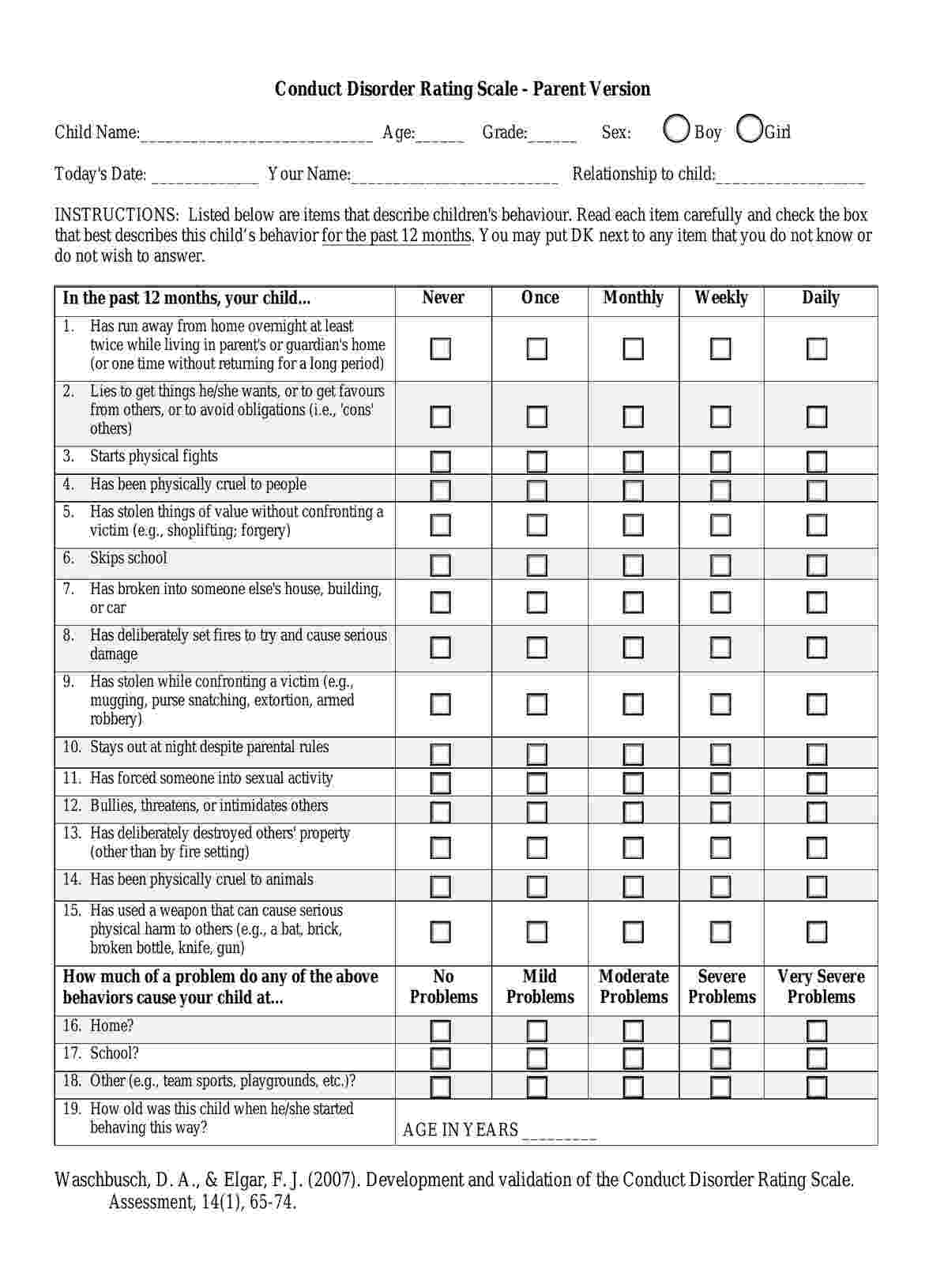Assessment for conduct disorders typically involves conducting interviews, using standardized assessment tools, and gathering information from multiple sources, such as parents, teachers, and the child themselves.

Conduct Disorder Assessment
Learn about conduct disorder assessment criteria and get Carepatron's free PDF download example for a comprehensive understanding of this mental health disorder.
Use Template
Conduct Disorder Assessment Template
Commonly asked questions
Common symptoms of conduct disorder include aggression towards people or animals, destruction of property, deceitfulness or theft, and serious violations of rules.
The best assessment for conduct disorder often involves using validated tools such as the Diagnostic Interview Schedule for Children (DISC) or the Child Behavior Checklist (CBCL) to evaluate behavior patterns and severity.
EHR and practice management software
Get started for free
*No credit card required
Free
$0/usd
Unlimited clients
Telehealth
1GB of storage
Client portal text
Automated billing and online payments











